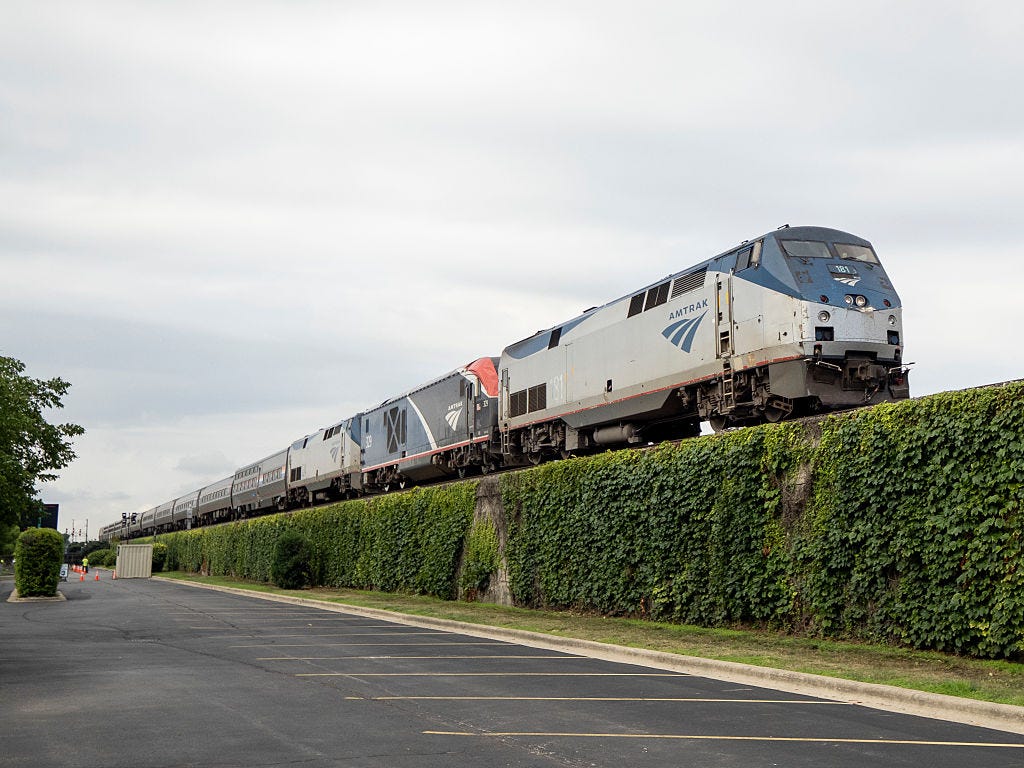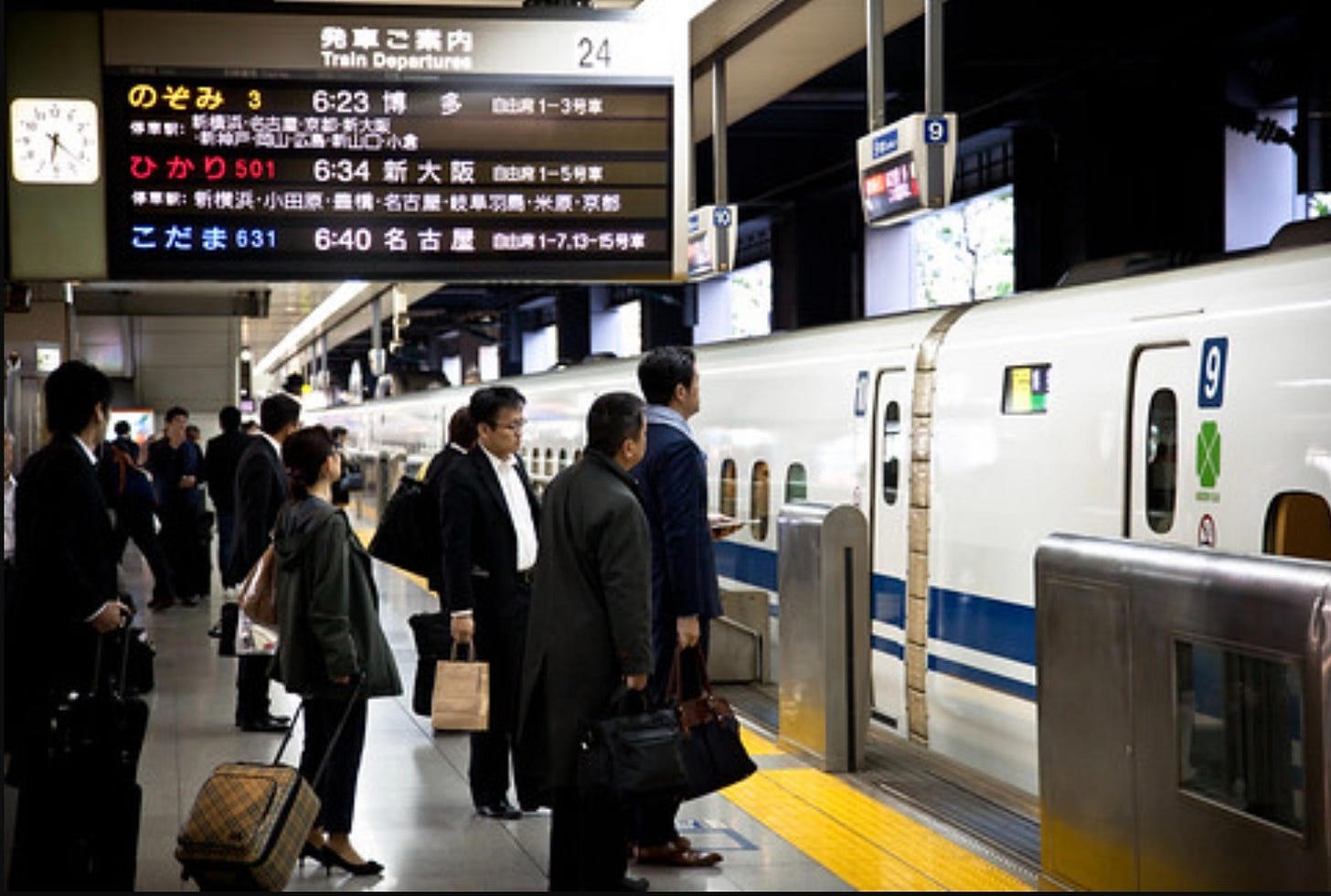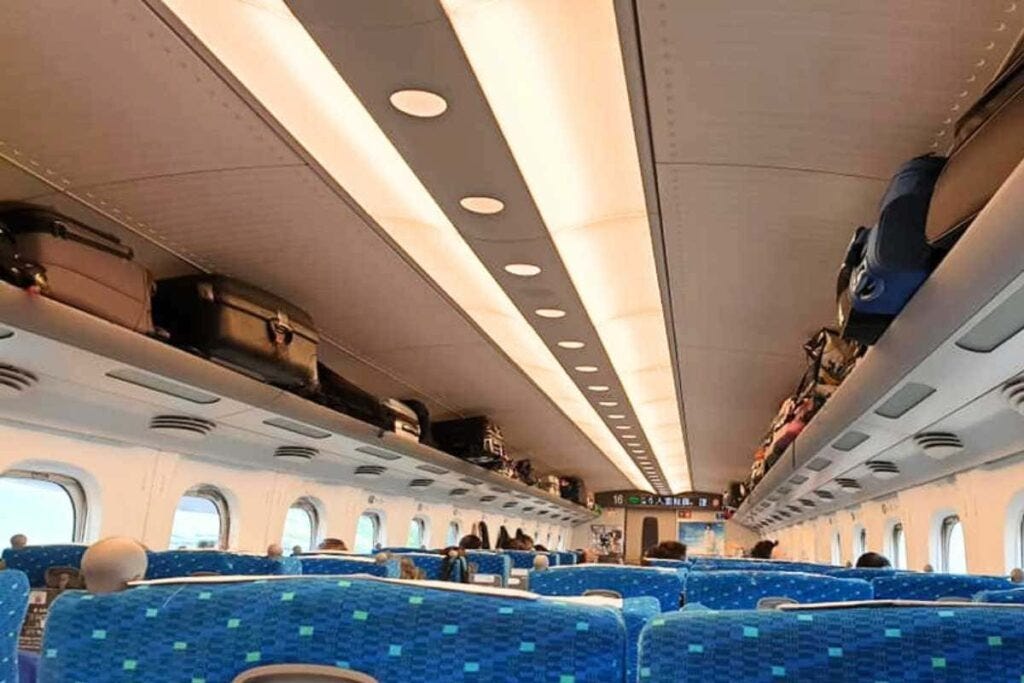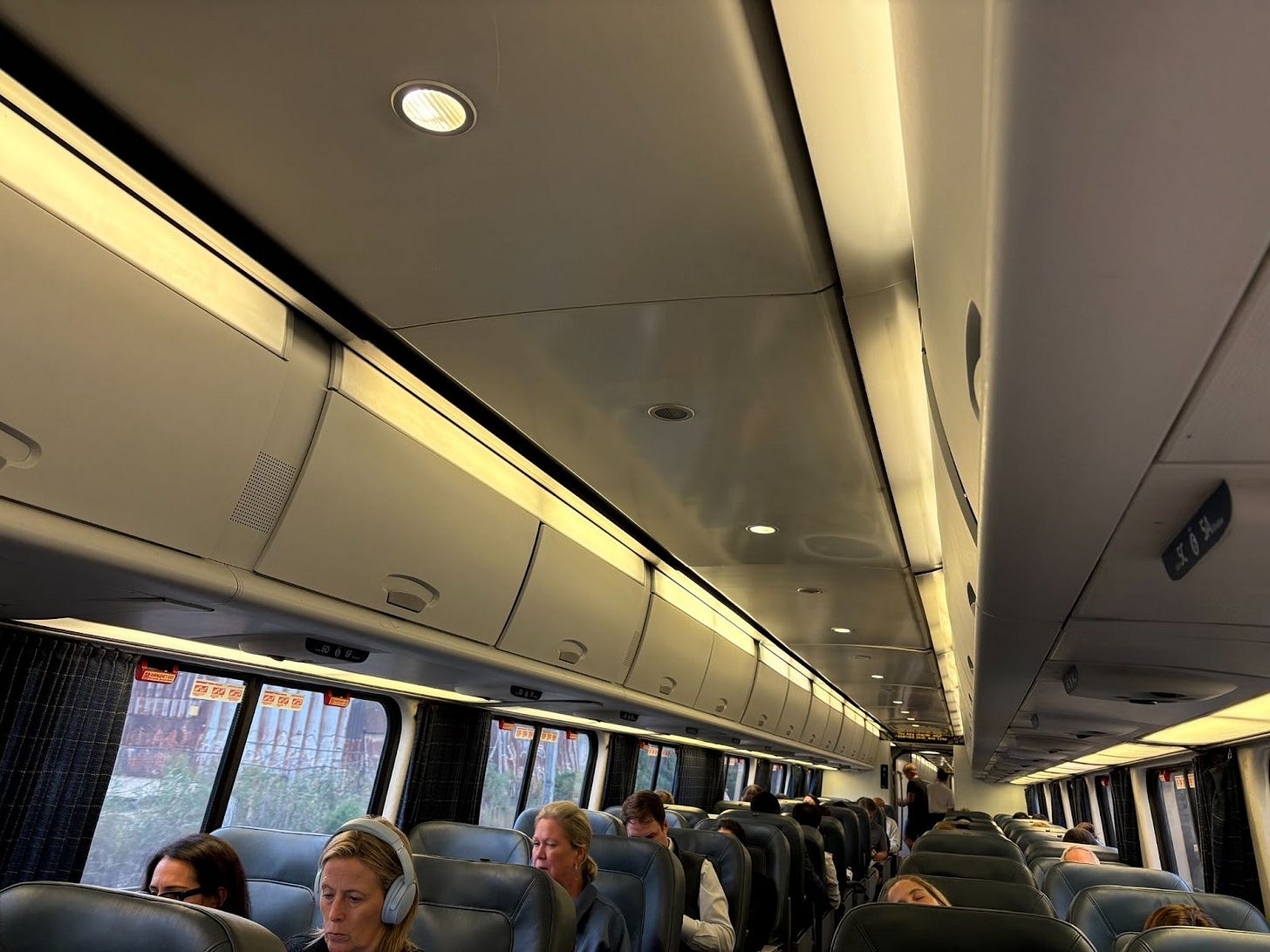What Japan Taught Me About American Trains
Amtrak made an airplane without wings.
I rode the train from New York to D.C. this week, and I have thoughts. I took the Acela, the flagship offering from Amtrak, America’s semi-nationalized, permanently beleaguered rail operator. The service spans the 225 miles that separate the sole superpower’s biggest city from its capital in a stately, none-too-rushed three hours. Plenty of time to mull the gap between this service and the trains back home.
Okay, yes, I’ve only lived in Japan for one year, but that’s more than enough for Japanese rail to etch itself into my soul. As an urbanist, there’s a special joy in living in a place built for and around trains.
The Tokyo metro area has more than 280 subway stations and around a thousand train stations. In the vast span of Central Tokyo, you are nearly always a short walk from several different metro and train lines. At peak times, trains show up every 150 seconds.
Not surprisingly, rail is the presumed mode for trips across metro Tokyo, which is home to more people than California. But rail is also the dominant form of long-distance transport, thanks to the famous Shinkansen bullet train network.
The Shinkansen is a marvel of human-centered design: the spinal column that holds Japan together. Riding the Acela made me realize it’s also something else: a train system designed to be used as a train system.
Take boarding. Trains are long, and they stop along a platform. The trick to getting people boarded quickly is to take advantage of these features. In Japan, that means checking tickets at the station gate, then letting passengers make their own way to the specific car they’ll need to board along a clearly marked platform.
To ensure everyone remains safe even when the platform is busy, barriers prevent anyone or anything falling on the tracks. This reduces delays. By the time the train pulls up to the platform, everybody is where they need to be. The whole procedure is designed to allow many people to board and unboard quickly, which is important considering trains are running at hundreds of miles per hour just 4 minutes apart.
But the point of the Shinkansen isn’t just speed: it’s flexibility. Along the Tōkaidō Shinkansen line between Japan’s two main cities, there are up to 16 trains per hour: one leaves every four or five minutes. So you can just show up at the station without even checking the timetable—on average, you’ll wait less than 3 minutes for the next train. You can reserve a seat, but you don’t have to.
At worst, you might end up in a standing-room-only car—but it’s not an airplane, so standing is inconvenient but not unsafe. In any case, if the train you get on is too full another one will soon follow. You can hop off anywhere along the line and hop onto the next one to get a seat.
Amtrak takes a different approach. Somebody must have decided that since airlines are the Acela’s main competitor, the trick is to make the Acela experience as airline-like as possible. You see nods to this throughout the passenger journey.
Begin with the station layout. In New York, you wait for your train not on the platform, but in a ticketed waiting room, where you watch for gate announcements that explicitly mimic what you get at an airport.
Passengers then schlep to line up at the one escalator leading down to the tracks. This chokepoint is entirely of Amtrak’s choosing; nothing about the technology itself necessitates it. Airplanes have a single point of entry; lining up to board is inevitable. Trains obviate the need for this, but on the Acela you have to line up anyway. Before you’ve even boarded the train, Amtrak has already nullified one of its best advantages.
Another way trains are different from airplanes is that they run on tracks, so they don’t experience air turbulence. Without turbulence, luggage bins can be uncovered (as they are on the Shinkansen), which makes them much more visible and much more useful.
The resulting cabin design isn’t fancy, but it’s functional. You can store your skis up there, if you want, and everyone can see at a glance where there’s space. You couldn’t do it on a plane, of course, because things would sporadically fall off and bonk the passengers on the head. On a train, there’s no reason not to.
But the Acela thinks it’s an airplane. So on board what you get are rows of closed, airline-style overhead bins that you can’t see through.
The Acela’s mindless mimicking of air travel goes right down to the details. You can check in your luggage on the Acela if you want. Even the announcement that comes over the speaker explicitly mimics what you’d hear on a plane.
What Amtrak has given us is a train masquerading as an airplane. This would make sense if people loved air travel, but everybody hates it. The only reason we put up with all the hassle inherent in an airplane is that the darn things fly, which is the one thing the Acela certainly can’t do.
Really the Acela is a train with low self-esteem. Or maybe a personality crisis.
But then: the Acela should have self-esteem issues. It’s never been given tracks engineered for high-speed travel, so it bumbles along at an average of 82 miles per hour while the Shinkansen Tokyo to Osaka travels at twice that speed.
What’s more, the service runs just once per hour per direction, at most. The airline-style ticketing system means you can’t just buy an open ticket, turn up at Penn Station and hop on the next Acela, even if you were willing to wait the 60 minutes or so that separate departures.
Once you do get that Acela ticket, a persistent upsell begins, with text, email and billboard messages from Amtrak entreating you to upgrade from their self-styled “business class” to first class (via their app, of course.) What ought to be a no-frills service turns into an exercise in premium mediocre marketing.
It’s maddening. Because New York-Washington ought to be the perfect route for high-speed rail. At Japanese speeds, you could hop on in New York and hop off in D.C. about an hour and 40 minutes later. The Shinkansen, at peak cadence, moves around 20,000 people per hour in each direction. The Acela, less than 400.
In a world where 16 Acelas per hour were leaving New York and reaching Washington in 100 minutes, how many airlines could compete? Not many. And that, one suspects, is why no such service will ever be allowed to exist.
Once you have a high-performance, high-cadence, human-centered rail network at your disposal, life without it becomes inexplicable. In Japan, airlines are forced to compete with trains purely on price: the only way they can make up for air’s inherent inferiority in convenience, comfort and flexibility. Between Tokyo and Osaka, only time-rich/money-poor people choose to fly.
Alas, without proper high-speed rail, the biggest city in the United States is joined to its capital largely by a highly polluting, horribly inconvenient air service. And to add insult to injury, the rail competitor that ought to dominate the route goes and humiliates itself—it apes the manners of its winged cousin.
Quico Toro is a contributing editor at Persuasion, Director of Climate Repair at the Anthropocene Institute, and writes the Substack One Percent Brighter.
Follow Persuasion on Twitter, LinkedIn, and YouTube to keep up with our latest articles, podcasts, and events, as well as updates from excellent writers across our network.
And, to receive pieces like this in your inbox and support our work, subscribe below:








Japan had visionary leaders in the 50s and 60s. All these years later they’re still reaping the benefits…
Toro-san, your article contains a well founded but rather old hat criticism of Amtrak's plodding Acela. Your timing missed the deployment in the last few weeks of the "Next Gen" Acela which has a much sleeker interior and no closed overhead bins... The stuff about boarding methods is less about "trains designed as airplanes" than the constraints of trying to retrofit urban infrastructure... Having lived in Japan, I do agree about the superiority of its train culture overall.